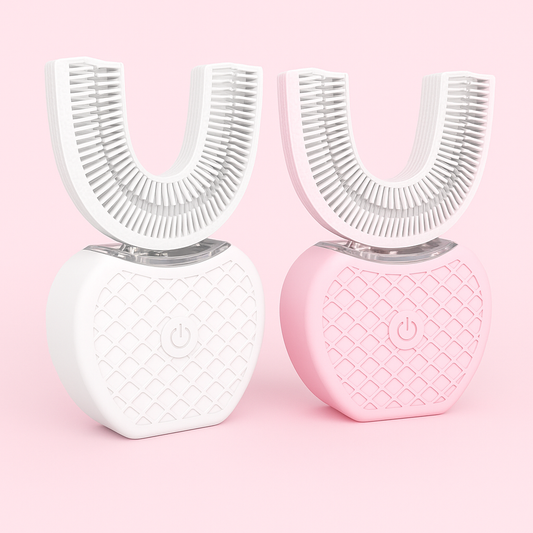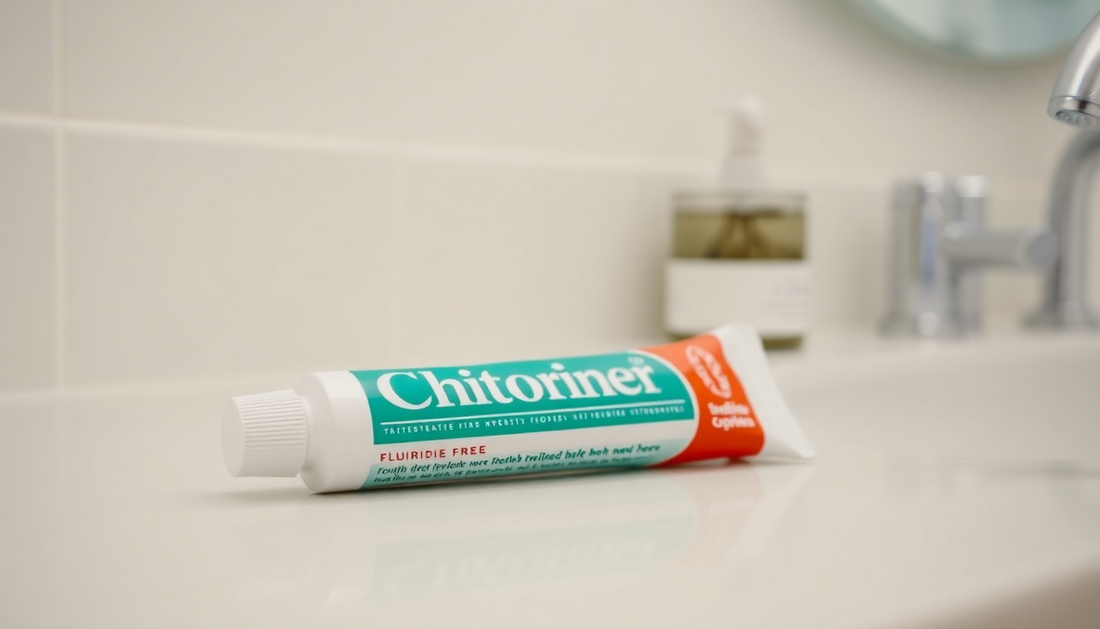Introduction: A New Path to a Brighter Smile
Search engines and shoppers in 2025 are flooded with phrases like "good whitening toothpaste," "toothpaste without fluoride," and "best toothpaste for whiter teeth." Many people want visible whitening results without fluoride, and a promising combination gaining attention is niacinamide plus xylitol. This article explains the science, daily routines, ingredient guidance, safety considerations, and shopping tips so you can confidently choose a fluoride-free approach that helps move your smile from plaque to polished.
Why Consider Fluoride-Free — And What That Really Means
- "Toothpaste without fluoride" is chosen for many reasons: personal preference, medical directives, or the desire for alternative oral-care strategies.
- Fluoride remains a cornerstone of cavity prevention for many patients; choosing a fluoride-free formula is a trade-off that should be informed by dental risk, age, and professional guidance.
- Fluoride-free does not mean ineffective. Well-designed formulations use other actives (like xylitol) and formulation strategies to control plaque and brighten tooth surfaces mechanically or enzymatically.
The Star Ingredients: Niacinamide & Xylitol — How They Help
Here’s a closer look at why niacinamide and xylitol are paired in some modern fluoride-free toothpastes:
- Niacinamide (Vitamin B3): Known in skincare for reducing inflammation, niacinamide is being evaluated in oral-care products for its soothing effects on soft tissue. While it does not bleach enamel, it can reduce gingival inflammation, making brushing and plaque removal more comfortable and effective over time.
- Xylitol: A naturally occurring sugar alcohol, xylitol is clinically shown to reduce the numbers of certain cavity-forming bacteria by interfering with their metabolism. That reduction in plaque-forming bacteria contributes to a cleaner tooth surface and improved breath, both of which support a brighter-looking smile.
How This Strategy Tackles Plaque and Stains
A fluoride-free niacinamide & xylitol toothpaste works through multiple pathways:
- Microbial modulation: Xylitol discourages growth of Streptococcus mutans and related species, helping reduce plaque accumulation.
- Reduced gum inflammation: Niacinamide helps soothe gum tissue so you can clean more efficiently and with less discomfort.
- Mechanical stain removal: With plaque controlled and gums healthier, abrasive and polishing agents in the paste can remove surface stains more effectively without aggressive brushing that damages enamel.
What Whitening Means: Surface vs. Intrinsic Stains
Understanding the type of stain you have helps you set the right expectations:
- Surface stains (extrinsic): Caused by coffee, tea, tobacco, and colored foods — these respond well to consistent brushing with an effective toothpaste and occasional professional polishing.
- Intrinsic stains: Deeper discoloration inside enamel or dentin from medications, trauma, or aging — these often require professional bleaching or restorative treatments.
A fluoride-free regimen with xylitol and niacinamide primarily supports removal of surface stains and improvement of overall oral health that contributes to a whiter appearance.
How to Choose a High-Performing Fluoride-Free Whitening Toothpaste
Look beyond marketing claims and focus on formulation details and consumer needs:
- Ingredient list: Confirm the presence of xylitol and ideally niacinamide or other calming agents.
- Abrasivity: Choose low-to-moderate abrasivity to avoid enamel wear; manufacturers sometimes report RDA or describe the polishing system used.
- Stain-removing actives: Enzymes, chelating agents, or silica polishes can remove surface stains safely when used properly.
- Transparency: Trusted brands publish ingredient concentrations or at least provide clear explanations of ingredient roles.
- User feedback: Look for reviews referencing "toothpaste that whitens teeth," "best toothpaste whitening teeth," or "best toothpaste for whiter teeth" that mention gradual, gentle improvement rather than immediate dramatic whiteness.
Daily Routine: A 30-Day Plan to See Real Improvement
Consistency matters as much as product choice. Here’s a simple 30-day routine to help you maximize your fluoride-free whitening approach.
- Morning: Brush 2 minutes with your niacinamide + xylitol toothpaste, focus on all tooth surfaces and the gumline. Rinse and follow with a tongue scraper or mild mouthwash if needed.
- Midday: Rinse with water after stain-causing foods or beverages; chew xylitol gum if cavities are a concern and no fluoride is available.
- Evening: Brush 2 minutes again before bed. Floss or use interdental cleaners to remove plaque between teeth where stains and decay begin.
- Weekly: Consider one gentle at-home polishing session (using a soft rubber polishing cup and non-abrasive paste) or schedule a professional hygiene visit for scaling and polishing.
- At 30 days: Reassess photos and shade under natural light; many users notice surface brightening and reduced staining when adherence is steady.
Comparing Fluoride and Fluoride-Free Approaches
Both approaches have pros and cons:
- Fluoride toothpaste: Strong track record for caries prevention, often recommended for children and high-cavity-risk adults.
- Fluoride-free toothpaste: Appeals to those avoiding fluoride; can offer plaque control and stain reduction via other ingredients like xylitol, enzymes, and polishing agents.
- Key decision factors include your cavity risk, age, and dentist recommendations. If you have many restorations or high caries risk, speak with your dentist before switching to a fluoride-free product.
Common Myths and Misuses — "Toothpaste Zit" and Other Myths
- "Toothpaste zit": You may see tips to dab toothpaste on facial blemishes. Most toothpaste formulations contain agents that can irritate skin—don’t use toothpaste as an acne treatment. Stick to products formulated for skin care.
- Immediate whitening claims: Beware products that promise drastic whitening overnight—safe whitening is gradual. Aggressive abrasives or acids can damage enamel.
- Natural = safe: Natural ingredients can still cause allergic reactions or irritation—always patch-test new products if you have sensitivities.
How to Read a Toothpaste Label
Labels can be confusing; here’s what to check:
- Active ingredients: Note whether fluoride is present or absent and if active antimicrobials or remineralizing agents are listed.
- Functional ingredients: Look for xylitol, niacinamide, enzymes, silica, and descriptions of abrasivity or polishing action.
- Warnings and age recommendations: Important for use in children.
- Certifications and testing: Clinical data, ADA (or local authority) acceptance, or third-party testing are strong signals of credibility.
Who Should Avoid Fluoride-Free Regimens?
- Young children who swallow toothpaste are often recommended fluoride toothpaste at appropriate, pea-sized quantities under supervision—consult your pediatric dentist.
- Individuals with active decay, dry mouth, or high-cavity risk may benefit more from fluoride therapies and should discuss options with their dentist.
Professional Options vs. At-Home Care
For people who want faster or more dramatic whitening than surface-polishing alone provides, professional options include:
- In-office whitening (bleaching) — effective for intrinsic and severe extrinsic stains.
- Professional prophylaxis/polishing to remove heavier surface stains and tartar.
- Custom-tray take-home bleaching supervised by a dentist for controlled results.
Pairs well with a daily niacinamide + xylitol fluoride-free routine for maintenance between treatments.
Safety, Side Effects, and When to Call a Professional
- Irritation or persistent sensitivity: Stop use and consult your dentist if symptoms persist after switching toothpastes.
- Allergic reactions: Rare, but possible—discontinue immediately if you notice swelling, rash, or severe irritation.
- Children: Use age-appropriate guidance from a pediatric dentist before switching to a fluoride-free formula for young children.
Shopping Checklist — Finding the Best Toothpaste for Your Goals
- Contains xylitol and lists niacinamide or anti-inflammatory agents.
- Describes polishing system and abrasion level in plain language.
- Transparent labeling and verifiable user reviews describing long-term use.
- Compatible with your oral-health profile—ask your dental professional if you are unsure.
FAQs — Short Answers to Popular Searches
- Will a toothpaste without fluoride whiten my teeth? Yes—primarily by improving surface cleanliness and reducing plaque; results are most visible for extrinsic stains.
- Is xylitol really effective? Xylitol is widely studied and used to reduce certain plaque-promoting bacteria and can support healthier oral conditions.
- Can niacinamide help my gums? Niacinamide has anti-inflammatory properties and may help soothe gums, making daily hygiene easier.
- What about "toothpaste whitening best" claims? Look for honest product descriptions, consumer reviews, and transparency rather than hyperbolic promises.
Case Scenarios: Practical Recommendations
- Low cavity risk, wants natural routine: Try a fluoride-free niacinamide + xylitol toothpaste for 60 days while tracking shade changes and gum comfort.
- High cavity risk: Discuss using fluoride treatments with your dentist; consider alternating a fluoride toothpaste with a fluoride-free xylitol product if you prefer periods without fluoride.
- Concerned about sensitivity: Choose low-abrasivity formulas and look for sensitivity-friendly ingredients; consult your dentist if sensitivity increases.
Conclusion: From Plaque to Polished — Make the Switch Mindfully
A thoughtfully formulated, fluoride-free toothpaste that combines xylitol and niacinamide can be an effective, gentle strategy to reduce plaque, soothe gums, and improve the appearance of surface stains. It’s not a magic bleach, but it creates the right conditions for a cleaner, brighter smile when paired with excellent oral hygiene and reasonable lifestyle adjustments.
If youre ready to explore carefully crafted options, check out trusted product lines and read ingredient labels closely. For a curated selection that highlights fluoride-free blends, explore good whitening toothpaste options and discover products advertised as fluoride toothpaste free. Want recommendations for the toothpaste whitening best that combine xylitol and niacinamide? Visit Havana Body to shop targeted formulas and take the next step toward a polished, healthier smile.


